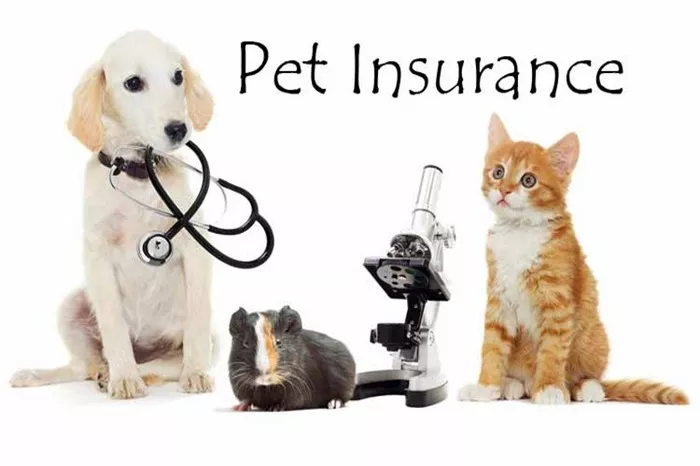Owning a pet is a rewarding experience filled with joy, companionship, and unconditional love. However, it also comes with responsibilities, including ensuring your pet’s health and well-being. Veterinary care can be expensive, especially when unexpected illnesses or injuries occur. Pet insurance can provide a financial safety net, but with numerous policies available, choosing the right one can be daunting. This article will guide you through what to look for in pet insurance, helping you make an informed decision that best suits your pet’s needs and your financial situation.
Understanding Pet Insurance Policies
When looking for pet insurance, it is essential to understand the different types of policies available. Each type of policy offers varying levels of coverage, so understanding these differences is crucial in selecting the right one for your pet.
Accident-Only Policies
Accident-only policies cover your pet if they are injured in an accident. This type of policy typically includes coverage for broken bones, cuts, and other injuries resulting from accidents. However, it does not cover illnesses or chronic conditions. Accident-only policies are usually more affordable but offer limited protection.
Time-Limited Policies
Time-limited policies provide coverage for accidents and illnesses for a specific period, usually 12 months. After this period, any condition that has been claimed will no longer be covered. These policies are suitable for covering short-term health issues but may not be ideal if your pet develops a chronic condition.
Maximum Benefit Policies
Maximum benefit policies provide a fixed amount of coverage for each condition your pet may face. Once the limit is reached, the policy will no longer cover that condition. This type of policy does not have a time limit for each condition, making it suitable for managing ongoing treatments within the coverage limit.
Lifetime Policies
Lifetime policies are the most comprehensive and often the most expensive. They provide coverage for accidents, illnesses, and chronic conditions throughout your pet’s life, as long as the policy is renewed annually. These policies have annual limits on the amount that can be claimed per condition or overall, but they reset each year. Lifetime policies offer the best protection for your pet, especially if they develop a chronic condition requiring long-term treatment.
Key Factors to Consider When Choosing Pet Insurance
Selecting the right pet insurance policy involves more than just choosing the type of coverage. Several key factors should be considered to ensure the policy meets your pet’s needs and fits within your budget.
Coverage Options
One of the most critical factors to consider is what the policy covers. While basic policies may cover accidents and illnesses, more comprehensive plans may include coverage for routine care, dental treatments, alternative therapies, and behavioral treatments. It’s important to assess your pet’s needs and consider any potential future health issues when evaluating coverage options.
Exclusions
All pet insurance policies have exclusions—specific conditions, treatments, or situations that the policy does not cover. Common exclusions include pre-existing conditions, hereditary or congenital conditions, elective procedures, and preventive care. Understanding what is not covered by a policy is just as important as knowing what is covered. Carefully review the exclusions to ensure the policy aligns with your expectations.
Deductibles
A deductible is the amount you must pay out of pocket before the insurance company starts covering the costs. Pet insurance policies may have different types of deductibles, such as per-incident deductibles or annual deductibles. Choosing a higher deductible can lower your monthly premium, but it also means you’ll pay more out of pocket when a claim is made. Consider your financial situation and how often you expect to make claims when deciding on the deductible.
Reimbursement Levels
Pet insurance policies typically offer different reimbursement levels, usually ranging from 70% to 90% of the total veterinary bill. The reimbursement level you choose will affect both your monthly premium and the amount you are reimbursed for covered claims. While a higher reimbursement level provides more financial protection, it also comes with a higher premium. Evaluate how much you’re willing to pay monthly versus how much you want to be reimbursed for claims.
Annual Limits
Annual limits refer to the maximum amount the insurance company will pay out in claims each year. Some policies may have no limits, while others have fixed limits for specific conditions or overall. It’s crucial to choose a policy with an annual limit that provides sufficient coverage for your pet’s potential healthcare needs. Consider your pet’s breed, age, and any known health risks when evaluating the annual limits.
Waiting Periods
Most pet insurance policies have waiting periods before coverage begins. Waiting periods can vary depending on the type of condition being covered, such as accidents, illnesses, or specific conditions like hip dysplasia. During the waiting period, you cannot make claims for those conditions. It’s essential to understand the waiting periods associated with a policy, especially if your pet has any pre-existing conditions or you are concerned about specific health risks.
Premium Costs
The cost of pet insurance varies widely based on factors such as the type of policy, coverage options, your pet’s breed, age, and location. It’s important to balance the premium cost with the level of coverage provided. While cheaper policies may be tempting, they may not offer adequate protection for your pet’s needs. On the other hand, more expensive policies may provide comprehensive coverage but could strain your budget. Consider your financial situation and how much you can afford to pay in premiums while still ensuring your pet receives the necessary care.
Customer Service and Reputation
When choosing a pet insurance provider, it’s important to consider the company’s reputation and the quality of customer service. Look for reviews and ratings from current and past customers to gauge the company’s reliability, claim processing speed, and overall satisfaction. A company with a strong reputation and excellent customer service can provide peace of mind, knowing that your pet’s health is in good hands.
Flexibility and Customization
Some pet insurance providers offer flexible policies that can be customized to fit your needs. This may include options to add or remove coverage for specific treatments, adjust reimbursement levels, or change deductibles. Customizable policies allow you to tailor the coverage to your pet’s unique needs and your budget. Consider whether the provider offers the flexibility to make adjustments to your policy as your pet’s needs change over time.
See Also: What Type of Cat Insurance Should I Get?
Understanding the Fine Print
When comparing pet insurance policies, it’s essential to carefully read and understand the fine print. The terms and conditions of a policy can significantly impact the level of coverage and the amount you pay out of pocket.
Pre-Existing Conditions
Most pet insurance policies do not cover pre-existing conditions, which are health issues your pet had before the policy started. Some policies may distinguish between curable and incurable pre-existing conditions, with the former potentially being covered after a waiting period. It’s crucial to disclose any pre-existing conditions when applying for coverage and understand how they will affect your policy.
Hereditary and Congenital Conditions
Hereditary and congenital conditions are health issues that are passed down genetically or present at birth. These conditions can be costly to treat, and not all policies cover them. Some providers offer specific coverage for hereditary and congenital conditions, while others exclude them. If your pet’s breed is prone to certain hereditary conditions, it’s important to choose a policy that includes coverage for these issues.
Chronic Conditions
Chronic conditions, such as diabetes or arthritis, require long-term management and treatment. Some policies may limit coverage for chronic conditions or exclude them entirely. Lifetime policies typically provide the best coverage for chronic conditions, but it’s important to verify the terms and conditions of the policy to ensure your pet is adequately protected.
Bilateral Conditions
Bilateral conditions affect both sides of the body, such as hip dysplasia or cataracts. Some policies may only cover treatment for one side, even if both sides are affected. Understanding how a policy handles bilateral conditions is crucial, especially if your pet’s breed is prone to such issues.
Alternative and Holistic Treatments
Alternative and holistic treatments, such as acupuncture, chiropractic care, or hydrotherapy, are becoming increasingly popular in veterinary care. However, not all pet insurance policies cover these treatments. If you are interested in pursuing alternative treatments for your pet, look for a policy that includes coverage for these options.
Behavioral Treatments
Behavioral issues, such as anxiety or aggression, can require professional treatment and therapy. Some pet insurance policies offer coverage for behavioral treatments, while others exclude them. If your pet has or is at risk for behavioral issues, consider a policy that includes coverage for these treatments.
Dental Care
Dental care is an essential aspect of your pet’s overall health. Some pet insurance policies include coverage for dental treatments, such as cleanings, extractions, or treatment for dental diseases. However, many policies exclude dental care or offer limited coverage. If dental health is a priority for your pet, look for a policy that provides comprehensive dental coverage.
Conclusion
Pet insurance is an important investment in your pet’s health and well-being. By taking the time to research and compare different policies, you can find the coverage that best suits your pet’s needs and your financial situation. Remember to read the fine print, assess your pet’s specific health risks, and choose a provider with a strong reputation and excellent customer service. With the right pet insurance policy, you can enjoy the companionship of your pet with the peace of mind that comes from knowing they are protected.






















